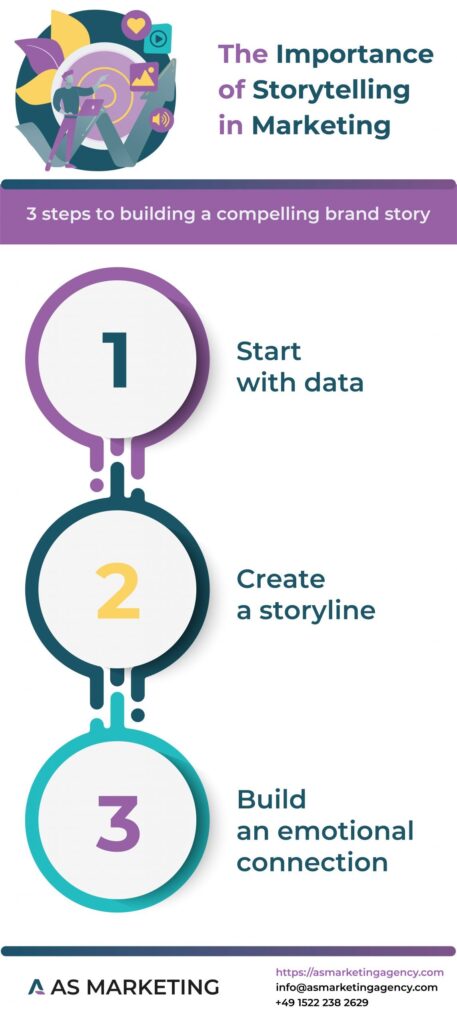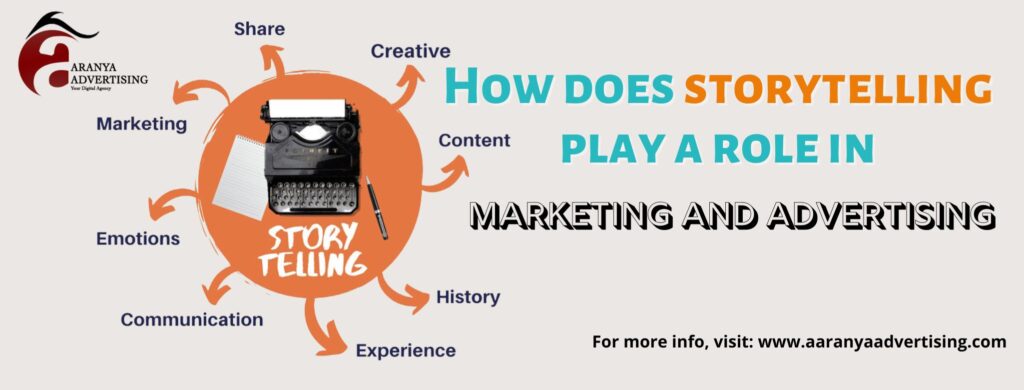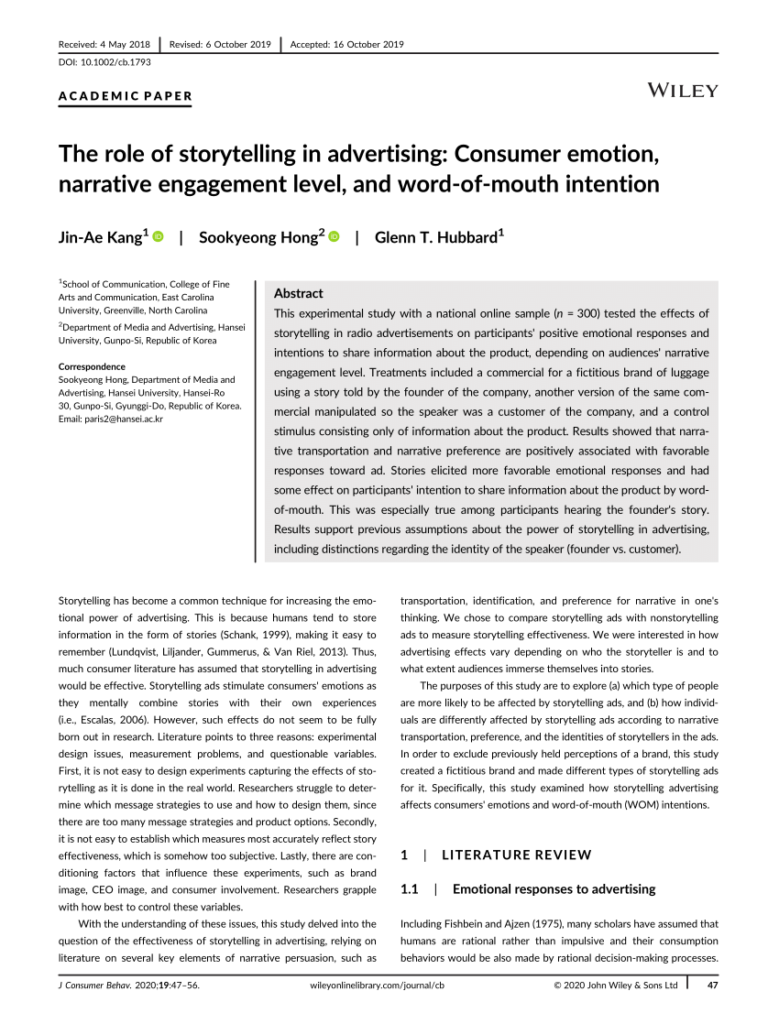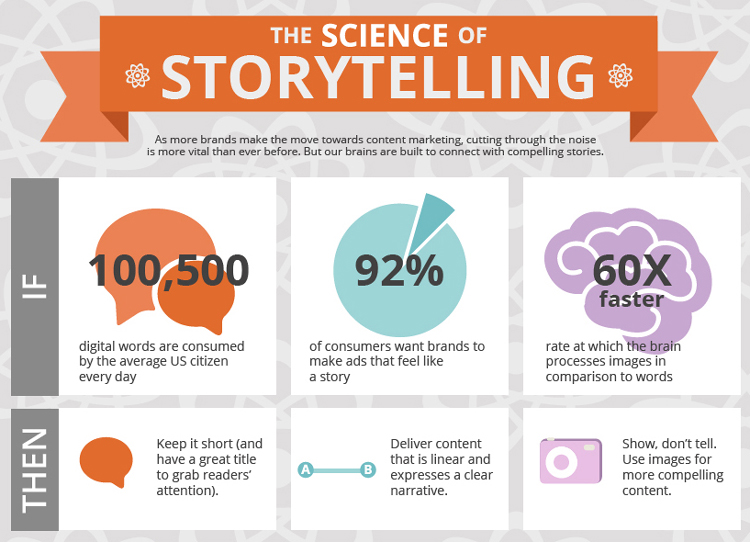Imagine a world where advertising doesn’t feel like advertising. A world where rather than being bombarded with in-your-face sales pitches, you are captivated by compelling stories that effortlessly draw you in. This is the power of incentive-driven advertising combined with the art of storytelling. In this article, we will explore the crucial role that storytelling plays in incentive-driven advertising and how it has the ability to not only engage consumers but also influence their buying decisions. Get ready to embark on a journey where the lines between advertising and entertainment blur, and where storytelling reigns supreme.
Understanding incentive-driven advertising
Definition of incentive-driven advertising
Incentive-driven advertising refers to a marketing strategy that aims to motivate and persuade consumers to take specific actions or behaviors by offering enticing rewards or incentives. These incentives can range from discounts, freebies, and loyalty points to exclusive access or special privileges. The purpose of incentive-driven advertising is to create a sense of urgency and excitement for consumers, ultimately leading to increased brand engagement and conversion rates.
Benefits of incentive-driven advertising
Incentive-driven advertising offers several advantages for businesses. Firstly, it helps attract and retain customers by giving them an extra reason to choose a specific product or service over competitors. The allure of receiving something extra can be incredibly appealing and persuasive. Secondly, incentive-driven advertising encourages immediate action, as consumers are motivated to seize the opportunity before the incentive expires. This sense of urgency strengthens the connection between the brand and the consumer, fostering loyalty and repeat purchases. Additionally, incentive-driven advertising can create a positive brand image, as customers perceive the company as generous and customer-centric.
Examples of incentive-driven advertising campaigns
Numerous successful incentive-driven advertising campaigns have captivated audiences and yielded remarkable results. One such campaign is Starbucks’ Rewards program, where customers earn stars for their purchases, accumulating towards free drinks and personalized offers. This initiative not only drives repeat purchases but also fosters a sense of exclusivity and belonging among Starbucks enthusiasts. Another notable example is Amazon Prime, offering perks like fast, free shipping and access to unlimited streaming entertainment. By providing valuable incentives, Amazon has been able to attract and retain a vast number of loyal customers, ultimately boosting sales and profitability.
The power of storytelling in advertising
Definition and importance of storytelling
Storytelling in advertising refers to the art of presenting a brand or product using a narrative format that engages, entertains, and emotionally connects with the audience. It involves weaving a compelling story that captures the consumers’ attention and resonates with their values, aspirations, or emotions. Storytelling in advertising adds depth and dimension to a brand, making it more relatable and memorable. It allows businesses to go beyond features and benefits, evoking an emotional response that generates brand affinity and loyalty.
Emotional connection through storytelling
One of the key reasons why storytelling is powerful in advertising is its ability to forge an emotional connection with consumers. When a brand tells a story that evokes specific emotions, it becomes more than just a product or service. Consumers develop an emotional attachment and perceive the brand as a reflection of their own values, desires, or experiences. By tapping into these emotions, storytelling creates a lasting impact, allowing the brand to become a part of the consumer’s identity and fostering a sense of loyalty and trust.
Building brand identity and awareness
Storytelling can also help businesses establish and strengthen their brand identity. Through narratives, brands can communicate their values, mission, and unique selling propositions. By crafting a story that aligns with the brand’s core essence, storytelling enables businesses to differentiate themselves from competitors and cultivate a distinct identity in the minds of consumers. Moreover, storytelling aids in brand awareness, as memorable and engaging narratives are more likely to be shared, discussed, and remembered by consumers, leading to increased brand visibility and recognition.
Engaging and captivating the audience
In today’s increasingly cluttered advertising landscape, capturing and holding the audience’s attention is paramount. Storytelling provides a solution by creating a captivating and immersive experience that draws the viewer in. Well-crafted narratives engage the audience by stimulating their imagination, curiosity, and emotions. This engagement leads to enhanced message retention, as consumers are more likely to remember a story that resonated with them on a deeper level. By captivating the audience, storytelling enables businesses to cut through the noise and leave a lasting impression.

This image is property of asmarketingagency.com.
How storytelling enhances incentive-driven advertising
Creating a compelling narrative
Incentive-driven advertising becomes more persuasive and impactful when combined with storytelling. By crafting a compelling narrative around the incentives, businesses can create a sense of excitement and anticipation, encouraging consumers to participate and engage. The story could revolve around how the incentives can transform the consumer’s life or address their needs and desires. When presented in a narrative format, the incentives become more than just rewards – they become integral to the story and the consumer’s journey.
Generating interest and curiosity
Storytelling in incentive-driven advertising generates interest and curiosity by piquing the audience’s imagination. By incorporating elements of mystery, suspense, or surprise, businesses can create a sense of anticipation and intrigue. For example, a story could unfold where the audience is left guessing how the incentives will be revealed or awarded. This approach not only captures attention but also compels consumers to actively seek out more information, boosting engagement and increasing the likelihood of conversion.
Establishing trust and credibility
Storytelling in incentive-driven advertising can be a powerful tool for building trust and credibility. By sharing authentic stories that reflect real-life experiences or customer testimonials, businesses can establish themselves as reliable and trustworthy. Consumers are more likely to believe and resonate with a story that comes from a genuine place rather than a purely promotional message. Storytelling humanizes the brand, making it more relatable and relieves skepticism surrounding the incentives being offered.
Encouraging action and behavior change
Incentive-driven advertising aims to prompt consumers to take specific actions or change their behavior. Storytelling can provide the motivation and inspiration needed to drive these changes. By illustrating the potential benefits and outcomes associated with the incentives, storytelling creates a sense of desire and aspiration within the audience. When consumers can envision themselves as the protagonist of the story, taking action becomes much more compelling and likely.
Structuring a storytelling-based incentive-driven ad
Identifying target audience and their desires
To create an effective storytelling-based incentive-driven ad, it is crucial to identify the target audience and understand their desires, needs, and pain points. By gaining insights into the audience’s motivations and aspirations, businesses can tailor the narrative and incentives to resonate deeply with them. This understanding allows for the creation of a story that speaks directly to the audience, enhancing the chances of engagement and conversion.
Crafting a captivating plot and characters
A compelling narrative relies on a well-crafted plot and relatable characters. The plot should have a clear beginning, middle, and end, drawing the audience into an engaging story arc. The characters should be relatable and reflect the target audience, allowing them to envision themselves in the story. By investing time and effort into crafting a captivating plot and characters, businesses can create a story that captures the attention and imagination of the viewers.
Integrating incentives seamlessly
When weaving incentives into the storytelling, it is essential to ensure a seamless integration that feels natural and authentic. The incentives should be aligned with the plot and the desired actions or behaviors. Rather than appearing as blatant promotions, the incentives should be presented as a logical progression within the story, creating a sense of reward and fulfillment for the audience. This integration enhances the overall storytelling experience and makes the incentives more compelling and desirable.
Setting up a call-to-action
A storytelling-based incentive-driven ad should conclude with a clear and compelling call-to-action (CTA). The CTA should be aligned with the narrative and clearly communicate the desired action or behavior change. By seamlessly transitioning from the story to the CTA, businesses can ensure a smooth and powerful transition, guiding the audience towards the intended goal. A well-crafted CTA enhances the chances of conversion and creates a sense of urgency for the audience to act upon the incentives presented in the story.
Measuring success in storytelling-based ads
Defining relevant KPIs
Measuring success in storytelling-based incentive-driven ads requires the identification of relevant key performance indicators (KPIs) to assess the effectiveness of the campaign. These KPIs can vary depending on the specific objectives of the ad, but common metrics include conversion rates, engagement levels, brand sentiment, and overall return on investment. By defining and tracking these metrics, businesses can measure the impact of their storytelling-based ads and make informed decisions for future campaigns.
Tracking engagement and conversion rates
Engagement and conversion rates are essential metrics for evaluating the success of a storytelling-based incentive-driven ad. Engagement measures the level of audience interaction and interest generated by the ad, such as likes, shares, comments, or time spent viewing the content. Conversion rates, on the other hand, quantify the number of viewers who took the desired action or behavior change prompted by the ad. By monitoring these metrics, businesses can gauge the effectiveness of their storytelling approach and make necessary adjustments to optimize campaign performance.
Analyzing brand sentiment and perception
Storytelling in incentive-driven advertising can impact brand sentiment and perception. It is crucial to analyze feedback and monitor brand sentiment to ensure that the storytelling aligns with the desired brand image and resonates positively with the audience. Social listening tools, surveys, and focus groups can provide valuable insights into how the ad is perceived, allowing businesses to make informed decisions regarding future storytelling strategies.
Case studies of successful storytelling-driven ads
Nike’s ‘Find Your Greatness’ campaign
Nike’s ‘Find Your Greatness’ campaign exemplifies the power of storytelling in incentive-driven advertising. The campaign focused on celebrating the untapped potential of everyday athletes, encouraging them to embark on their personal journeys towards greatness. By showcasing relatable stories of individuals overcoming challenges and pushing their limits, Nike was able to inspire and motivate its target audience. The incentives were not explicitly highlighted but instead became a natural consequence of the personal triumphs depicted in the ads. Through storytelling, Nike moved beyond mere product promotion and conveyed a powerful message of empowerment, resonating deeply with consumers.
Apple’s ‘Shot on iPhone’ series
Apple’s ‘Shot on iPhone’ series demonstrates how storytelling can be seamlessly integrated with incentives. The campaign highlighted the impressive photography capabilities of the iPhone by showcasing breathtaking images captured by users worldwide. Each image was accompanied by a brief story, allowing viewers to connect emotionally with the captured moments. While the primary incentive was not explicitly mentioned, the campaign implied that owning an iPhone empowers individuals to capture beautiful moments effortlessly. By combining stunning visuals, relatable stories, and the implied incentive of owning an iPhone, Apple successfully engaged and inspired its audience to explore their own photography potential.
Coca-Cola’s ‘Share a Coke’ campaign
Coca-Cola’s ‘Share a Coke’ campaign utilized storytelling to enhance an incentive-driven initiative. The campaign involved personalized Coke bottles with people’s names, encouraging consumers to share a Coke with someone special. By featuring heartwarming stories of friendships and connections made through the act of sharing a Coke, Coca-Cola emphasized the incentive of creating memorable moments with loved ones. The storytelling aspect of the campaign added an emotional depth to the incentive, fostering a sense of nostalgia and happiness associated with sharing a Coke. The combination of storytelling and personalization made the campaign highly successful, with consumers actively seeking out bottles with their names or the names of their loved ones.

This image is property of aaranyaadvertising.com.
Ethical considerations in storytelling-based advertising
Avoiding deceptive or misleading narratives
While storytelling can be a powerful tool in advertising, it is essential to ensure transparency and avoid deceptive or misleading narratives. Businesses should avoid exaggerating or misrepresenting the benefits or outcomes associated with the incentives. Authentic storytelling relies on trust, and misleading consumers can lead to a damaged brand reputation and loss of trust. By maintaining honesty and authenticity, businesses can build long-lasting relationships with their audience based on mutual trust and respect.
Respecting privacy and data protection
Storytelling-based advertising often relies on personalized content that may involve the use of consumer data. It is crucial for businesses to respect privacy and protect customer data in line with legal and ethical standards. Gathering and utilizing consumer data should be done with explicit consent and within the guidelines of data protection regulations. By ensuring data privacy and being transparent about data collection practices, businesses can cultivate trust with their audience and mitigate any concerns related to privacy issues.
Maintaining transparency and disclosure
Storytelling-based advertising should maintain transparency and disclosure, especially when presenting incentives. The audience should be clearly informed about the conditions, limitations, or eligibility criteria associated with the incentives being offered. Transparency builds consumer trust and helps manage expectations, preventing any potential dissatisfaction or misunderstandings. By providing clear and transparent information, businesses can maintain the integrity of their storytelling and minimize the risk of negative consumer experiences.
The future of storytelling in incentive-driven advertising
Utilizing emerging technologies for immersive experiences
The future of incentive-driven advertising lies in leveraging emerging technologies to deliver immersive storytelling experiences. Virtual reality (VR), augmented reality (AR), and interactive content can transport consumers into captivating narratives, making them active participants in the brand’s story. By incorporating these technologies, businesses can create more memorable and engaging experiences, further enhancing the effectiveness of incentive-driven advertising.
Personalizing storytelling for individualized incentives
Advancements in data collection and analysis allow businesses to personalize storytelling in incentive-driven advertising. By utilizing consumer data, businesses can tailor narratives and incentives at an individual level, maximizing relevancy and appeal. Personalization offers the opportunity to create more meaningful connections, enhancing engagement and conversion rates. The future of storytelling in incentive-driven advertising lies in harnessing the power of personalization to create highly targeted and impactful campaigns.
Leveraging user-generated content and social media
The rise of user-generated content and social media has transformed the advertising landscape. Incentive-driven advertising can benefit from incorporating user-generated content to amplify storytelling efforts. Encouraging consumers to share their own stories or experiences related to the brand or incentives creates a sense of community and authenticity. By leveraging social media platforms, businesses can further extend the reach and impact of their storytelling-based incentive-driven ads, tapping into the power of user networks and influencers.

This image is property of i1.rgstatic.net.
Challenges and limitations of storytelling in incentive-driven advertising
Balancing storytelling with promotional objectives
One of the challenges of storytelling in incentive-driven advertising is finding the right balance between storytelling and the promotional objectives of the campaign. While storytelling aims to engage and captivate the audience, the primary goal is to encourage specific actions or behaviors. It is important for businesses to ensure that the narrative does not overshadow or distract from the incentives being offered. Striking the right balance between storytelling and promotional objectives requires careful planning and a deep understanding of the target audience’s preferences and engagement patterns.
Keeping ads concise and impactful
In today’s fast-paced digital landscape, attention spans are shrinking, making it crucial for storytelling-driven ads to be concise and impactful. The challenge lies in delivering a compelling story within a limited timeframe or space without losing the essence and emotional connection. Businesses must prioritize key messages and distill the narrative down to its most impactful elements. By focusing on brevity, businesses can ensure that their storytelling-based ads grab attention and leave a memorable impression.
Overcoming audience skepticism
Audience skepticism can pose a challenge to storytelling-based incentive-driven advertising. Consumers are increasingly discerning and skeptical of marketing messages, particularly when incentives are involved. It is crucial for businesses to address this skepticism by maintaining authenticity, transparency, and delivering on the promises made. Managing skepticism requires consistent and honest storytelling that aligns with the brand’s values and builds trust with the audience.
Conclusion
Storytelling plays a crucial role in incentive-driven advertising, elevating campaigns to new heights of engagement, emotional connection, and persuasiveness. By weaving compelling narratives, businesses can tap into the power of emotions, build brand identity, and motivate consumers to take desired actions or behavior changes. The integration of incentives within these narratives creates a sense of excitement and fulfillment, enhancing the overall storytelling experience. Personalization, technology, and ethical considerations will shape the future of storytelling in incentive-driven advertising, offering exciting opportunities and challenges. Ultimately, leveraging storytelling in incentive-driven advertising allows businesses to establish meaningful connections with their audience and drive meaningful results.

This image is property of longitude.ft.com.


